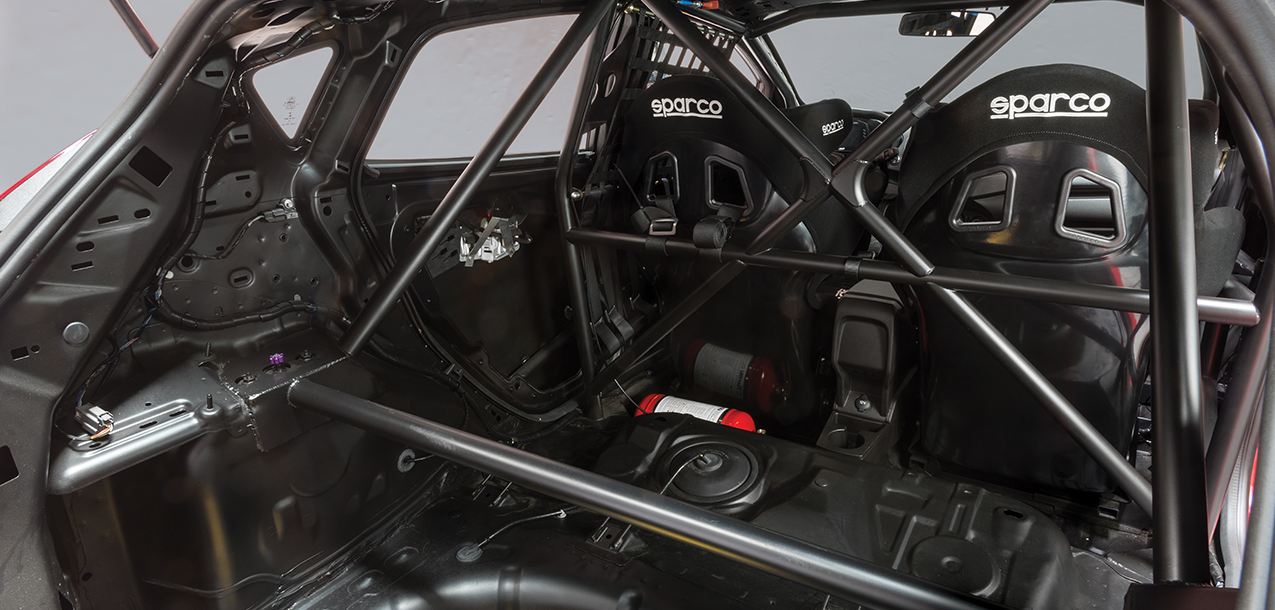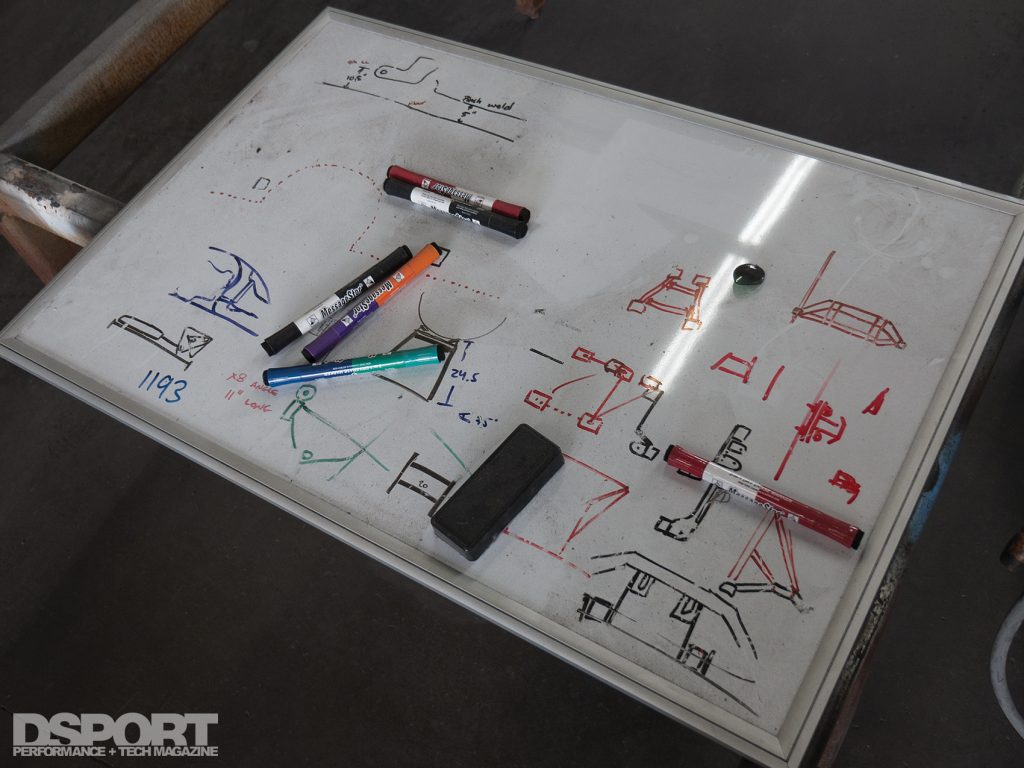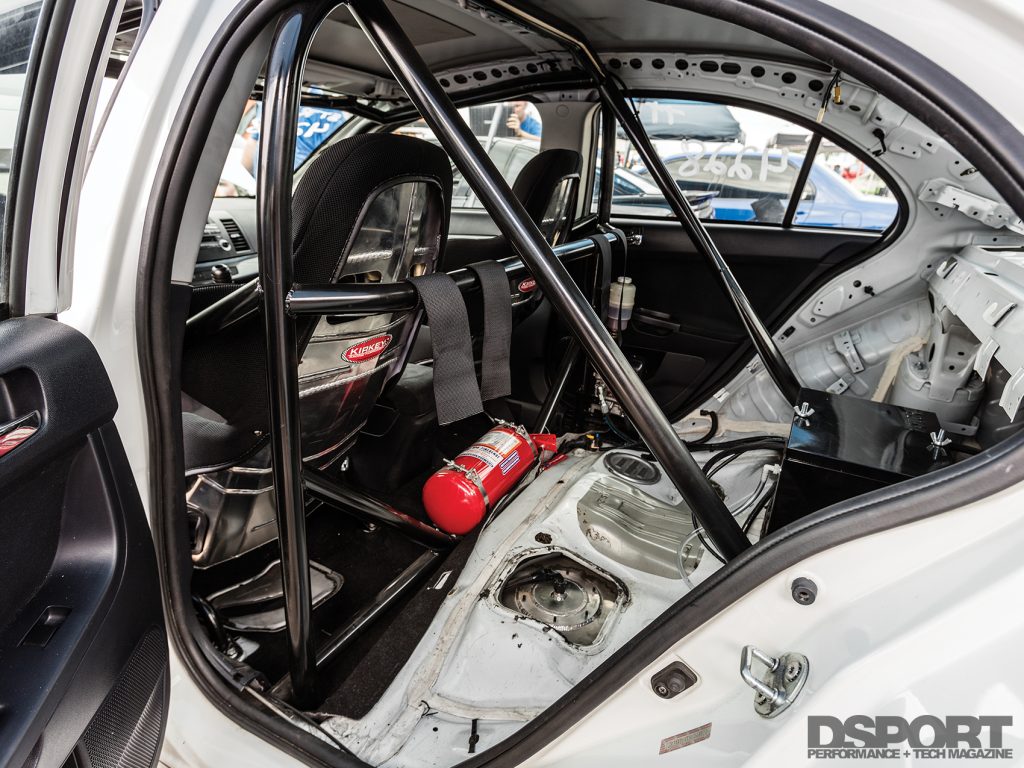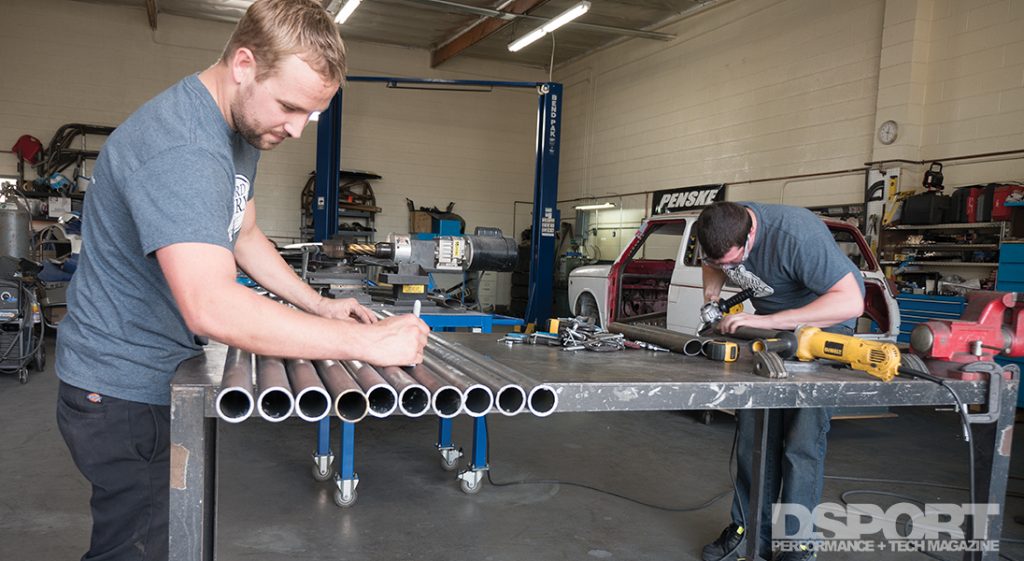Back in 2012, driver Jeremy Foley and co-driver Yuri Kouznetsov found themselves flying off the edge of a mountain during their run up the Pikes Peak International Hill Climb. The 550whp Mitsubishi Evo 8 took flight from the infamous “Devil’s Playground” corner at 70 MPH as the EVO glided into a 45-degree slope covered in boulders that rolled the chassis more than 10 times. After throwing body panels and various parts in all directions, the car finally came to rest, exposing a mostly bare roll cage and the vehicle occupants inside. Despite the harsh and violent nature of this crash, both driver and co-driver survived without serious injury. Numerous factors played roles in saving Foley and Kouznetsov from a worse fate, but the car’s roll cage stands out as the hero in this incident.
Text and Photos by Cameron Parsons
DSPORT Issue #176
Too many auto enthusiasts and racing drivers refuse to acknowledge a severe crash as any kind of real possibility. Instead, they invest time and money into cheap shortcuts and shoddy workmanship to make something that shouldn’t pass. If you’d rather avoid ambulances and extended hospital visits, do your research and select your most effective options in crash and rollover safety. This starts with analyzing what you want to drive and where, understanding the rules to participate, and learning how to identify quality work.
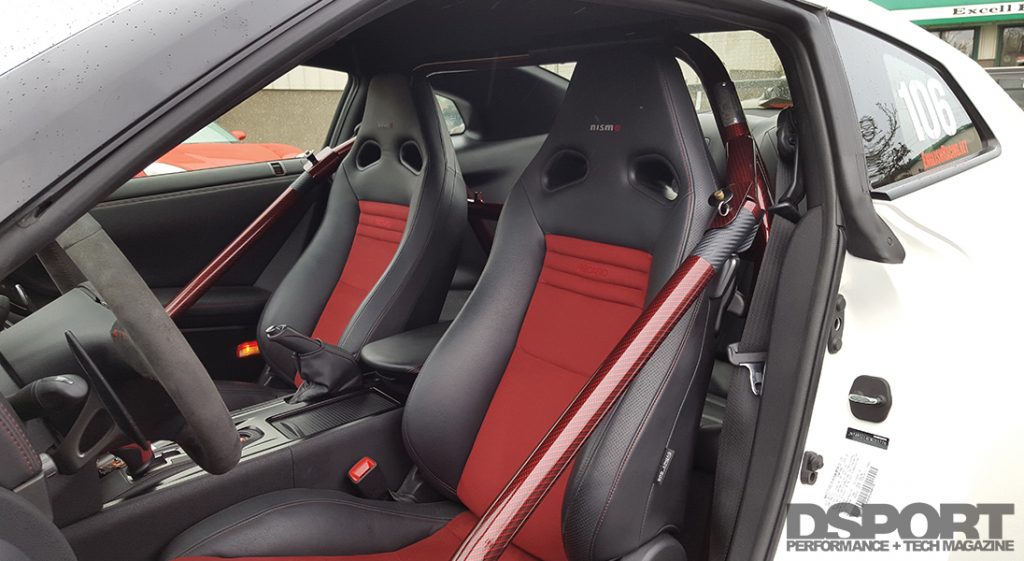 Quality bolt-in roll bars and cages are an excellent means of improving safety while maintaining a near factory level of comfort and convenience.
Quality bolt-in roll bars and cages are an excellent means of improving safety while maintaining a near factory level of comfort and convenience.
Track Days and Autocross
The best advice for anyone new to the concept of pushing a car to its limits is to start slow. Entry-level track days, autocross and time trial events remove the racing elements of rubbing paint and late pass attempts. This makes these events much more attractive to newbies and those on a small budget. These events typically don’t require additional rollover protection for hardtop cars, while convertibles must run some sort of roll bar or factory roll hoops. In either case, most modern cars in factory trim meet the minimum requirements without the need for any modification. If you own an older convertible without any sort of roll bar or roll hoop, most any aftermarket or custom-fabricated option will suffice, as long as it is sturdy and passes the “broomstick test.” You don’t want to be sent home for insufficient safety equipment before the day even starts, so always contact the event organizers ahead of time to ensure that your car is considered safe for the track.
The Broomstick Test
Most organizations abide by the “broomstick test” on convertibles to ensure that the roll bar is effective. This test involves drawing a straight line from the top of the bar to the top of the windshield to see if the driver’s helmet sits above or below this line. If their helmet touches or extends beyond this line, a rollover could end very badly for them. To this end, many organizations require that the driver’s helmet sits at least two inches below this virtual line. It is never a bad idea to give yourself some extra clearance with a taller roll bar option.
Although many modern convertibles carry factory rollover protection, aftermarket options can deliver the difference between passing tech inspection and not.
Time Trial Racing
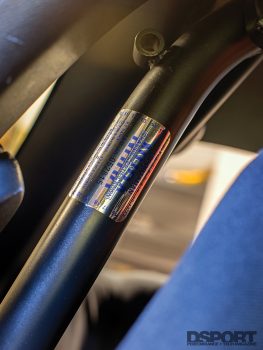 Although time trial or time attack racing poses little risk of collision with another vehicle, it is still considered a competition environment. For this reason, organizations require certified roll bars or minimum four-point roll cages for most production hardtop vehicles and for all convertibles, even if the factory setup includes rollover protection. This means that the roll bar or cage must have received a stamp of approval from FIA, NASA, SCCA, SFI or some combination of the four. This may sound like a hassle to those who don’t want to tamper with the factory setup, but the reality is most of these aftermarket, approved options provide much stronger protection with higher clearance in case of an incident that puts the car upside down.
Although time trial or time attack racing poses little risk of collision with another vehicle, it is still considered a competition environment. For this reason, organizations require certified roll bars or minimum four-point roll cages for most production hardtop vehicles and for all convertibles, even if the factory setup includes rollover protection. This means that the roll bar or cage must have received a stamp of approval from FIA, NASA, SCCA, SFI or some combination of the four. This may sound like a hassle to those who don’t want to tamper with the factory setup, but the reality is most of these aftermarket, approved options provide much stronger protection with higher clearance in case of an incident that puts the car upside down.
Wheel-to-Wheel Competition
The rules for rollover protection are much more demanding in wheel-to-wheel road racing environments. At this level, consult with a professional instead of attempting the task on your own. In production car racing classes sanctioned by SCCA and NASA, complete roll cages are required in every vehicle, unless you’re driving some sort of vintage racer from the 1960s or earlier (many of these require only a roll bar, but a full roll cage is always recommended).
Road racing cages utilize large hoops that line the A-pillars and B-pillars from the floor to the roof of the car. Diagonal and “X” braces add reinforcements to the doors and throughout the cabin. Special-made gussets fill in the corners and joints to further strengthen potential weak spots. In most classes, the cage must attach to the vehicle structure in a minimum of six points to eight points. Save yourself the headache and track down an experienced roll cage builder. It is certainly a more expensive option, but you’ll have a race-legal cage in a matter of weeks, instead of months. Many racing series hold their own requirements for cage designs, but it’s not hard for some cage builders to construct a roll cage that meets and exceeds the rules for multiple racing series, enabling the car to compete in even more events.
Drag Racing
Quarter-mile drag racing calls for an entirely different set of rules. Many tracks and organizations allow you to race your car with factory safety equipment or at least basic roll bars until your E.T.s drop below 11.50 seconds (convertibles typically require stronger rollover protection at slower times and speeds than hardtop cars). Once your times reach below 11 seconds or your speeds exceed 135 MPH, it’s time to start shopping for roll bar or roll cage options. The exception here is if your full-bodied car maintains an unaltered firewall, floor and body without exceeding a 10-second E.T., in which case a roll bar will suffice. So begins the complications of NHRA safety regulations.
Many of the drag racing community are frustrated by rollover protection rules. The requirement of additional safety hardware at given speeds may sound like a sensible move, but the rules get much more complicated than that once a roll cage becomes necessary. In fact, when the plan is to cover the quarter-mile in under 8.50 seconds, there’s an entire SFI book that outlines the regulations for roll cage construction. The rules include so many “if/then” clauses, the United States Federal Tax Code reads like a Dr. Seuss book in comparison. If you’re considering installing a roll cage in your drag car yourself, you may want to think again and hire a seasoned professional to do the job, potentially saving you a lot of time and money.
Look Closely
If you’re shopping around for the right builder to cage your car, take a close look at their past projects. This can tell you a lot about the function and reliability of their work. According to Moti Almagor of Blackbird Fabworx, of Canoga Park, CA, “any respectable cage builder must be proficient in three categories: they must be able to understand the rulebook, produce quality welds and put together a functional cage design.”
If you show up to a race with a cage that’s not built to comply with the regulations, your weekend ends before it ever started. Crack open any racing organization’s rulebook and you’ll find that there is indeed an art to fully understanding the rules. SFI’s book strictly on cages for drag racing is more than 50 pages long. The SCCA GCR, which covers all of its classes of racecars, extends to nearly 1,000 pages. The reality is that the faster you go, the rules get significantly more complicated. An intelligent cage builder should do all the deciphering for you and ensure that you’ll pass tech inspection.
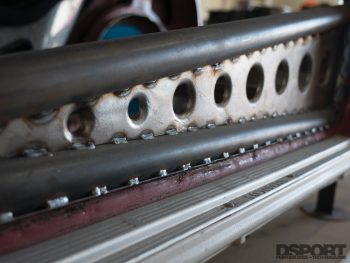 Second, the builder must be able to put together clean and strong welds. This is the part of the cage assembly that bonds the entire design and all of its hardware together, any weak link here risks the functionality of the entire cage. Observe the welds around the base plates that hold the struts to the car’s floor and chassis. Most rulings require these areas to fit to the floor without any gaps, which often calls for creative and precise modification in order to fit properly. As a result, these are some of the most difficult areas to weld. It’s also difficult to complete a weld fully around a tube that lies up against the car’s roof or an obstruction. A lazier fabricator might opt to simply build the cage smaller to make room to squeeze in those welds, or not make a complete weld. Others may have a different assembly process up their sleeve that allows tighter fitments as an end result. Check that all of the welds cover the complete area of connection for a full 360 degrees. If you discover cracks, craters, or burned-in holes that the welder attempted to fill in with a fatter weld, turn away and shop elsewhere.
Second, the builder must be able to put together clean and strong welds. This is the part of the cage assembly that bonds the entire design and all of its hardware together, any weak link here risks the functionality of the entire cage. Observe the welds around the base plates that hold the struts to the car’s floor and chassis. Most rulings require these areas to fit to the floor without any gaps, which often calls for creative and precise modification in order to fit properly. As a result, these are some of the most difficult areas to weld. It’s also difficult to complete a weld fully around a tube that lies up against the car’s roof or an obstruction. A lazier fabricator might opt to simply build the cage smaller to make room to squeeze in those welds, or not make a complete weld. Others may have a different assembly process up their sleeve that allows tighter fitments as an end result. Check that all of the welds cover the complete area of connection for a full 360 degrees. If you discover cracks, craters, or burned-in holes that the welder attempted to fill in with a fatter weld, turn away and shop elsewhere.
The third necessary skill of a qualified fabricator, which Almagor refers to as the “black magic” of the cage, is the design. It is very possible for a given cage to be both lighter and stronger than others, even if using the same type of material. Not only that, but the cage can work to the car’s benefit in terms of handling performance as well. This is the difference between a builder that chooses to meet the bare minimum of the rules, and one who aims to extract the most benefit possible out of their work.
Bolt-In Cage versus Custom Fabricated
Although aftermarket bolt-in cages and custom cages serve the same purpose of providing rollover protection, most car owners should rarely find themselves struggling to decide between the two. Bolt-in cages are typically much more affordable and provide the option to revert the car back to the factory setup. This option increases safety while meeting the requirements to compete in time trial events and some wheel-to-wheel race events. However, bolt-in cages rarely fulfill the strict demands of the rulebooks in wheel-to-wheel racing and high-performance drag cars. Although more expensive, a custom roll cage massively increases safety and handling performance if designed correctly.
| Equipment Type | Price Range | Pros | Cons |
|---|---|---|---|
| Factory Equipment | $0 | • No modification necessary • No additional cost |
• Not designed for speeds and situations on track • Does not comply with racing safety regulations • Usually weaker and less functional than aftermarket or custom options |
| Bolt-in Roll Bar | $500 – $1,200 | • Affordable • Many comply with timed competition safety regulations • Generally taller and stronger than OEM roll bars in convertibles • Can be installed without professional help • Unobtrusive to comfort and vision |
• Only protects from upside-down incidents on flat surfaces • Only rules-compliant in some series and organizations |
| Bolt-in Roll Cage | $1,000 – $2,500 | • Relatively affordable • Complies with most sanctioning body rulebooks • Can be installed without professional help • Removable • Stiffens chassis |
• Often not as strong as custom or welded cage • Extra weight • Poorer fitment compared to a custom cage |
| Weld-in/Custom Roll Cage | $2,500 – $5,000 | • Meets and exceeds safety regulations • Maximum level of safety • Stiffens chassis |
• Most expensive • Extra weight • Permanent installation |
Right Side Up
It’s no mystery that a roll bar or roll cage serves the monumental purpose of protecting a driver in case of a rollover incident. With that known, far too many people still choose to go with the bare minimum in rollover protection. Reasons may include cost, convenience or even looks. The unfortunate truth is that safety is a very real component of racing that many don’t think they will ever face. But when a rollover does occur, the results can be catastrophic. To this end, what’s a few extra pounds in your car for a roll bar or cage that can save your life?


